In the world of web servers, NGINX and Apache are two of the most common applications you’ll encounter. If your use case fits, one or both can help you build and scale a powerful, fast, high-traffic web application for your business.
But before jumping into different setups and tech stacks, let’s explore the differences between Apache and NGINX.
Which one is faster? Which one is easier to configure? How does each server work?
NGINX and Apache have different architectures, configurations, and performance capabilities. How do they stack up against each other? We take an in-depth look at both solutions and compare how they measure up against each other.
Read on to discover how each server application works and what to pick for your project.
- NGINX vs. Apache: An overview
- Feature comparisons of Apache and NGINX
- Final thoughts: NGINX vs. Apache — the best web server for your business
NGINX vs. Apache: An overview
NGINX and Apache are two premier choices of server software. Apache uses a process-driven architecture, and a single thread handles each connection request, while NGINX uses asynchronous event-driven architecture. But what’s their history, how did they come into existence, and which is best for your business?
Apache
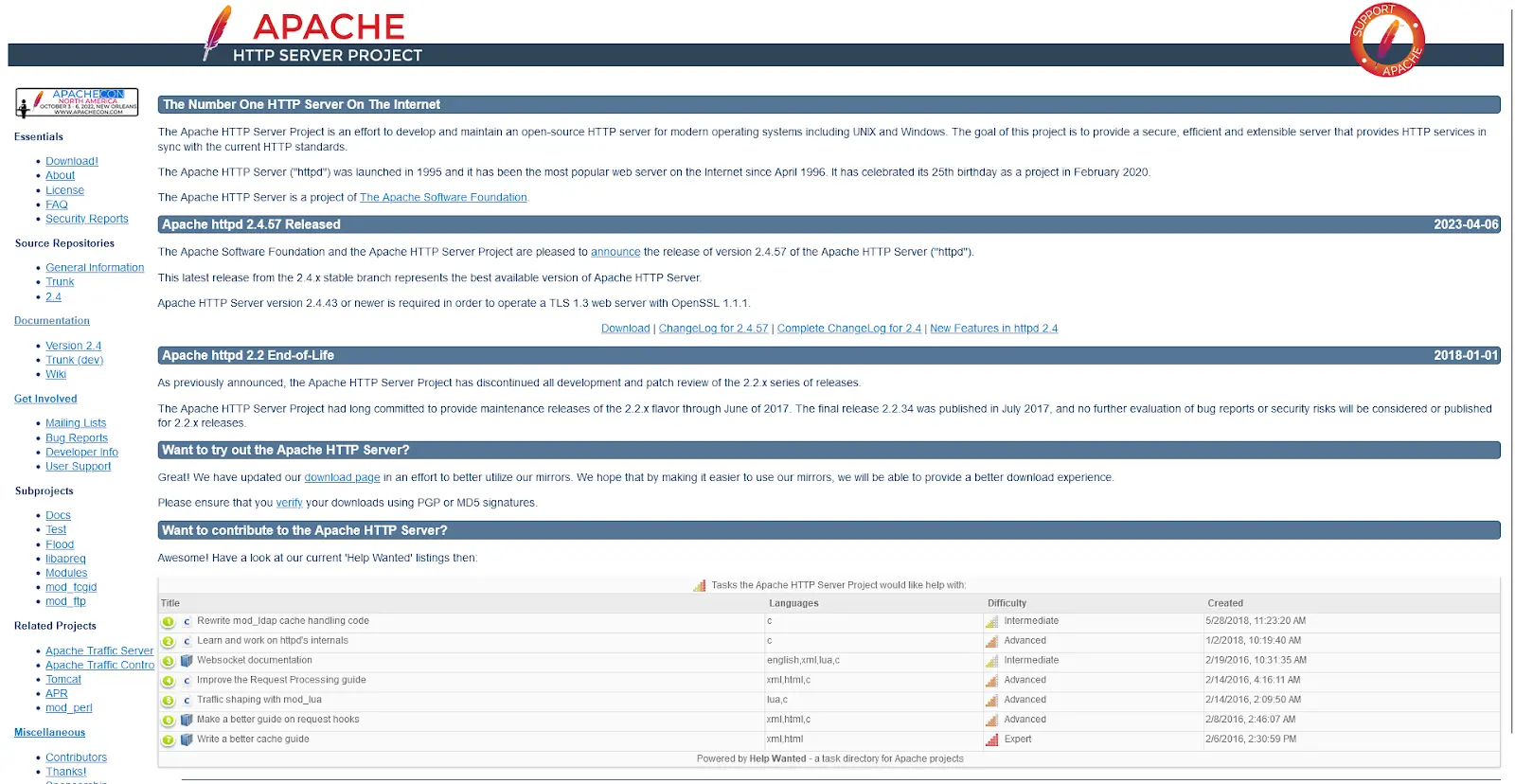
Apache, also known as the Apache HTTP Server, is an industry-standard open-source web server software developed and maintained by the Apache Software Foundation. It’s one of the most popular choices for web server software, powering a 31.9 percent market share of websites with known web servers.
The Apache web server uses a process-driven architecture that creates a new thread for each new request.
It was first released in 1995 under the Apache License and has evolved into a dominant web server in the industry. If you’re a web developer, you’ve likely come across Apache as part of the LAMP (Linux, Apache, MySQL, and PHP) tech stack, allowing you to build fast and responsive websites and applications.
Because of its unique capabilities, Apache has been a popular server software since 1996, benefiting from years of development, documentation, and integrated support from multiple complementary projects.
Apache is a robust, stable, and reliable web server known for its rich history. It boasts a long history of development and maintenance that keeps it stable with the help of an active global community of developers and users who play a significant role in its development.
It’s also a versatile solution for web servers. For instance, it supports multiple scripting languages (e.g., PHP, Python, and Perl) and runs on major operating systems like Windows and macOS. Also, all major Linux distributions come with Apache pre-installed, making web app deployment seamless.
Another key feature of Apache is its modular architecture that allows administrators to turn features on and off when needed. You can also extend its functionality using custom modules and functions that tune the server to meet your unique needs.
Pros
- An open-source solution available to individuals and organizations for free.
- Supports third-party modules, plugins, and extensions which enhance its functionality.
- A flexible and reliable server software with a robust testing and development track record.
- Community support from its active user base.
- Offers root access to server configurations; non-privileged users can edit permissions using the .htaccess file.
- Ideal for shared hosting environments.
Cons
- Resource-intensive software that may consume more CPU and memory than alternatives.
- May not be ideal for delivering static content due to its resource-intensive nature.
- Complex configuration due to its multiple functions.
- No support for asynchronous processing.
NGINX
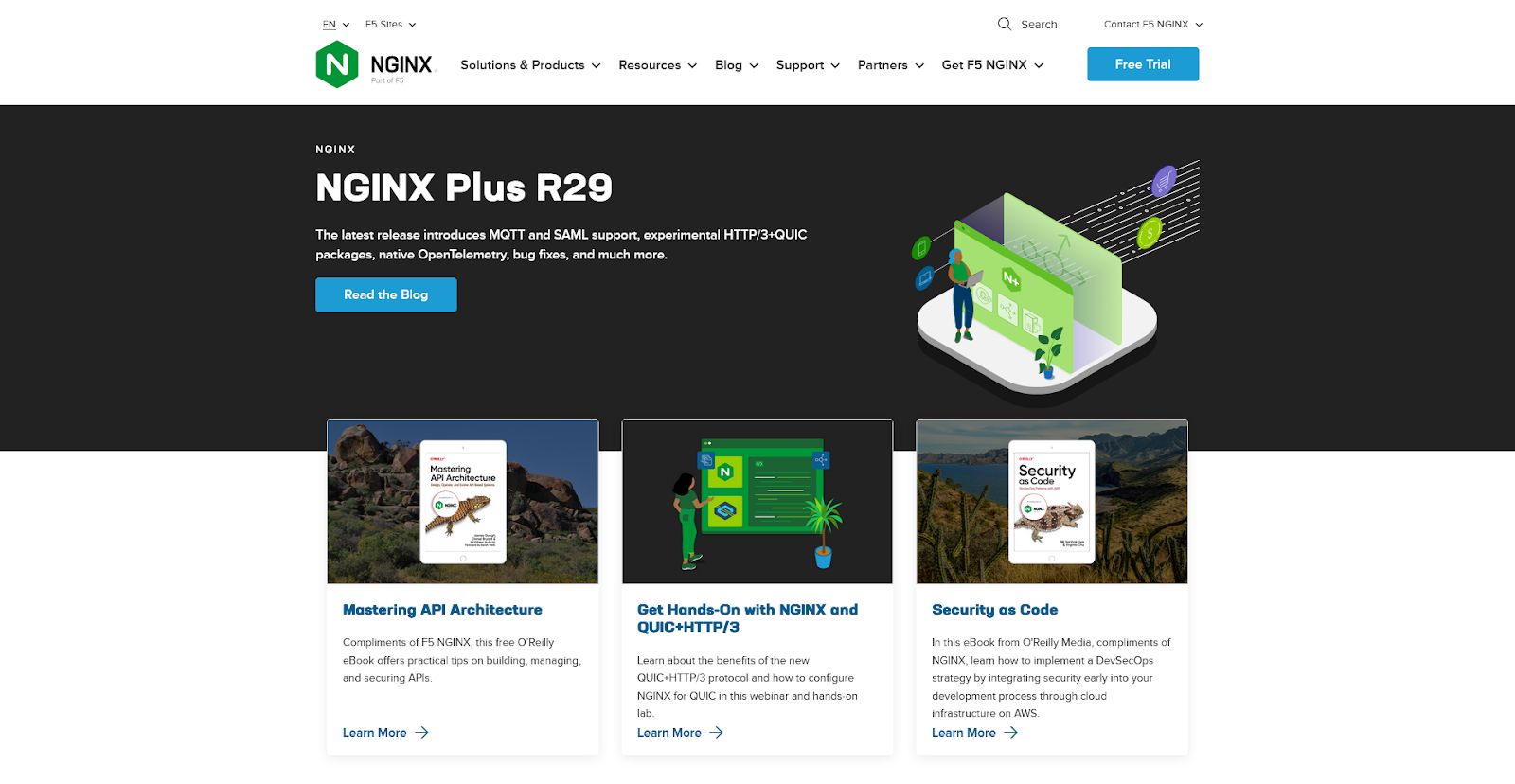
NGINX (pronounced as engine-x) is a web server that uses asynchronous event-driven architecture to deliver content to clients. It was first created in 2002 and later released to the public in 2004 by Igor Sysoev, a Russian developer who wanted a solution to the C10K problem.
Much like Apache, NGINX is an open-source project which can be freely used, modified, and distributed.
NGINX's non-blocking event-driven architecture makes it an ideal solution for processing multiple requests. NGINX works by creating one controller process and multiple worker processes. The controller keeps everything running, but each worker handles the tasks.
Because each process is asynchronous, worker processes can execute multiple requests without blocking other requests. Despite multiple processes, NGINX uses low memory, which enhances efficiency. This makes NGINX ideal for high-traffic websites, giving it an advantage over other web servers.
However, NGINX still shares some similarities with Apache. For instance, NGINX can handle HTTP, HTTPS, HTTP/2, and WebSocket file systems, as well as SSL/TLS termination. You can also use NGINX as a reverse proxy that distributes client requests across multiple servers.
Beyond that, NGINX is ideal for load balancing and caching, WebSockets, and URL rewriting, which allows the administrator to modify incoming requests and permit or restrict access.
NGINX is dynamic, with plenty of extension modules providing extra website functionality. Moreover, it comes native to all major Linux and Unix operating systems. Although it can be installed on Microsoft Windows, it may be less efficient, especially when scaling or dealing with UDP authentication.
Pros
- Asynchronous and event-driven architecture makes NGINX ideal for multiple concurrent requests.
- Ideal for high-traffic servers.
- Can be used as a reverse proxy server.
- Low-memory footprint with efficient CPU and memory usage.
- Easy to configure and use, even for beginners.
- Active community support and documentation.
Cons
- Limited support for the Windows operating system.
- No native support for dynamic content, and uses proxy requests on all dynamic content to a backend server before serving it to the client.
- Leans heavily on the use of external third-party modules.
Feature comparisons of Apache and NGINX
Apache and NGINX are popular server software options for building high-performance websites. However, they differ in approach. Let’s explore each web server application and see which option best serves your needs.
Architecture
The architecture of server software refers to its internal mechanisms and layout that determine how it handles connections, web requests, and user traffic. Think of Apache’s and NGINX’s architecture as the inner workings of a car engine and how each component helps them deliver the best service.
Apache
As mentioned earlier, Apache, by default, uses a process-driven architecture, and a single thread handles each connection request — A thread being the shortest flow of instructions a scheduler can handle.
However, Apache comes with a couple of potential downsides. Heavy resource consumption and a lack of support for asynchronous processing can slow down your server, increasing page load times and sometimes leading to website outages.
Apache cleverly resolves these problems using multi-processing modules (MPMs) that accept and respond to server requests. As a user, you can pick any of the three main MPMs to optimize your server, but you can only load one MPM at a time.
The MPMs in Apache 2.4 are:
- mpm_worker: The worker MPM creates multiple threads with each process, and each thread can handle a connection request. Your system can now serve multiple threads at once and scale better because each thread in the MPM needs fewer resources than a single process.
- mpm_event: This MPM is much like the worker MPM but handles keep-alive connections too. It sets aside threads to keep certain connections alive while allocating running requests to other threads. This way, keep-alive requests don’t slow down the entire system. This makes the event MPM the most resource-efficient option in the Apache server.
- mpm_prefork: These are unthreaded MPMs where each child process can only handle a single request at a time. Once the requests exceed a specified amount, server performance suffers severely, and scaling with this MPM becomes problematic. The prefork MPM is ideal for stability and compatibility.
NGINX
NGINX’s architecture is asynchronous and event-driven, which means it can handle multiple simultaneous connections within a single process. It does so by running a single controller process and several child processes.
This type of architecture makes NGINX ideal for scalability because it can efficiently distribute client requests across processes, even on low-power systems.
The controller process performs high-level operations that read and interpret configuration files, bind to ports, and form child processes.
Child processes are crucial to NGINX’s operations, and they fall into three categories:
- Worker processes: Handle thousands of concurrent HTTP connections and eliminate the need for new processes or threads. Worker processes run independently, creating worker connections that handle a single request thread. They also read and write content to the server disks and communicate with upstream servers.
- Cache loader processes: These processes load the disk cache into the shared memory used by other worker processes. They only run once after NGINX starts.
- Cache manager processes: Keep cached data within configured limits and check it periodically to cut the oldest-accessed data.
NGINX may be your best bet if your website has high traffic levels, like an ecommerce store or cloud storage services.
Verdict: Although Apache has multi-processing modules to support multiple processes, NGINX's asynchronous event-driven architecture wins. NGINX is better for high traffic and scalability. However, Apache‘s architecture means it can handle stable projects that need more compatibility.
Performance (static vs. dynamic content)
Next is a performance comparison between NGINX and Apache on content delivery (i.e., dynamic and static content delivery). Dynamic content changes depending on a user’s behavior, interests, and selections. On the other hand, static content is served directly to the webpage without any modifications.
Apache
Apache uses a file-based approach to deliver static content, a function any of its MPMs can deliver. Beyond that, it excels as a dynamic content delivery server software. It relies only on its internal components and integrates a unique programming language processor into each worker instance.
You can activate the language processor in each module using Apache's loadable modules. That way, an Apache server can run dynamic content within the server without needing external software support.
NGINX
NGINX delivers static files faster than Apache due to its asynchronous architecture. That makes it the ideal server software for static web content. However, it falls short when delivering dynamic content.
Since NGINX doesn’t feature an inbuilt capability to process dynamic content, it will use an external process for execution. It must wait for external software to process and return decoded content before sending it back to the browser. This means more administrator configuration requirements.
Verdict: Both Apache and NGINX excel when delivering static content, but Apache is ideal for dynamic content. NGINX doesn’t natively process dynamic content and may need an external processor across a protocol it can accommodate.
Security
Security is another critical consideration to make when choosing between Apache and NGINX. Both server systems are secure, but they approach security in different ways.
Apache
Over the years, Apache has been a secure software for HTTPD server connections. However, you can still configure the server for more security.
Apache uses three configuration settings to thwart a denial-of-service (DoS) attack:
- TimeOut: Defines the amount of time — 60 seconds by default — the server waits before failing a request.
- KeepAliveTimeout: Manages how long an Apache server connection stays open for a new request.
- RequestReadTimeout: Cuts connections with users who send requests slower than expected.
NGINX
Right out of the box, NGINX offers rate-limiting capabilities, which manage the incoming request rate. NGINX breaks the connection if its rate value exceeds or falls below typical browser activity. Its unique architecture also protects upstream servers from too many requests — a symptom of distributed denial-of-service (DDoS) attacks.
You can also configure NGINX to deny access to specific IP addresses, bandwidth, and subrequests. Beyond that, NGINX supports Transport Layer Security (TLS) and Secure Sockets Layer (SSL) protocols.
Verdict: Both Apache and NGINX offer exceptional security features for your needs. However, you may need extra security measures to protect your website from malicious attacks.
Configuration
When setting up server software, you’ll notice critical differences between Apache and NGINX module systems.
Apache
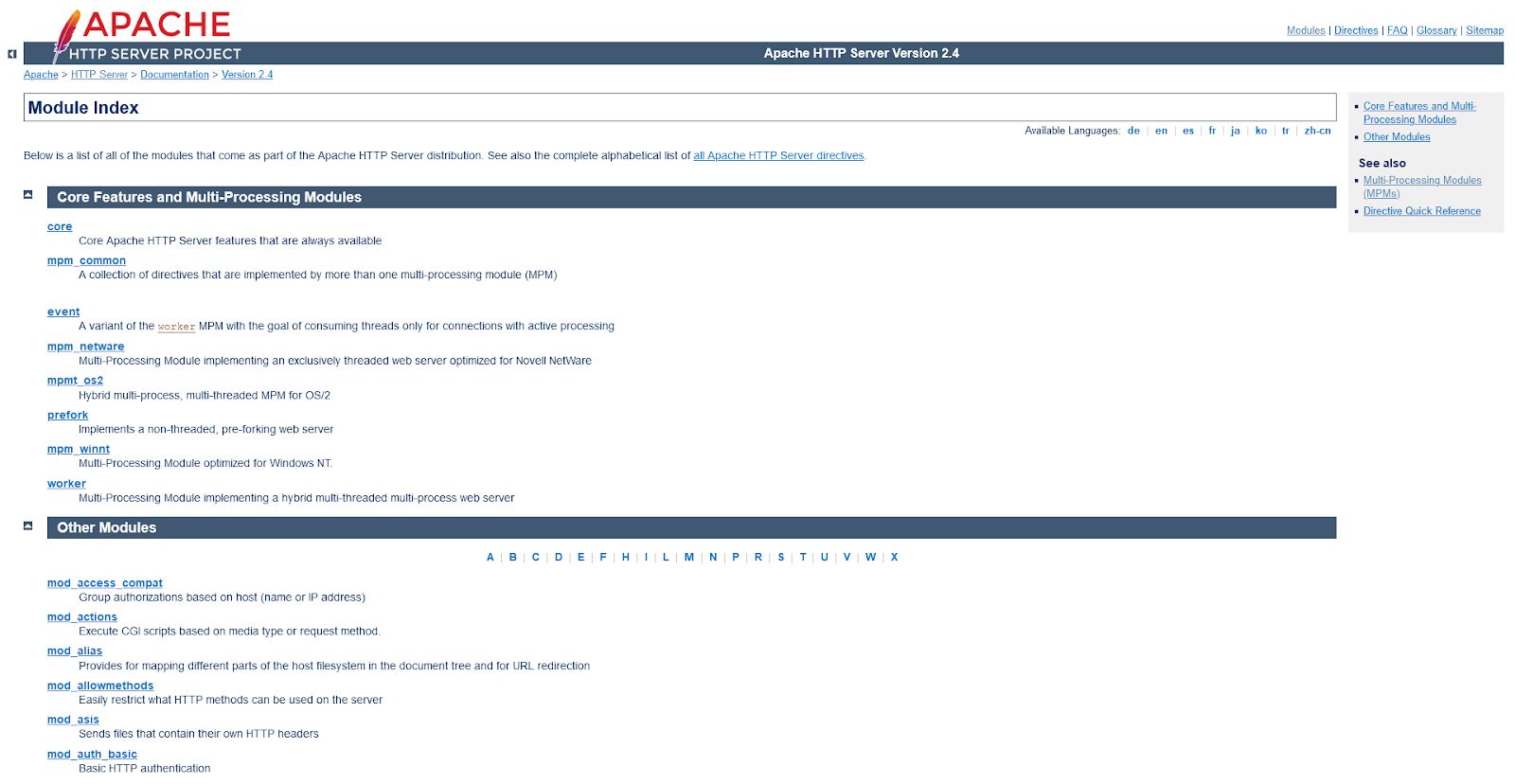
Apache has multiple dynamically loadable modules you can activate when needed. These Apache modules are ideal for multiple tasks, including setting up environment variables, rewriting URLs, and defining expiration intervals.
You can set up additional directory-level configurations in the .htaccess files. These files allow you to configure directories in your server without affecting other areas.
The benefit of .htaccess files is that the server executes them without requiring a server reload, and they are interpreted whenever located on a request path. Moreover, non-privileged users can control specific website elements without taking control of the full configuration file.
Many hosting providers use Apache because they can maintain control of primary configurations, even where they give clients directory control.
NGINX

Unlike Apache, NGINX does not interpret .htaccess files and offers no other way to access and configure files per directory. Instead, all settings are available on the primary configuration file.
And while that makes NGINX less flexible, it brings a speed advantage.
NGINX also comes with extra third-party modules that can further enhance its capabilities. Intermediate and advanced users can also build their modules. Unlike Apache, NGINX does not support dynamic modules unless you purchase the enterprise version. Otherwise, commands must be compiled with the free NGINX version before they can be executed.
Verdict: Apache is more flexible; you can configure it using .htaccess files. This allows you to configure directories separately from the rest of the server files. NGINX isn’t as flexible, which makes it faster and more efficient than Apache.
Support
Support is an essential factor to consider when choosing a web host. And whether your preferred server software offers reliable support for performance optimization is essential to know before choosing a system.
Apache

Apache has a trove of information and documentation covering all its key aspects. The Apache website offers release notes, manuals, guides, tutorials, and other information that can help you use Apache better.
Beyond that, you can also access its community on Stack Overflow and Freenode IRC networks, where other users can help you troubleshoot common problems.
NGINX
There are also plenty of community forums that cover NGINX issues, where developers offer advice and tips to new and seasoned users. One such forum is on their website, but there are many others across social media and the internet.
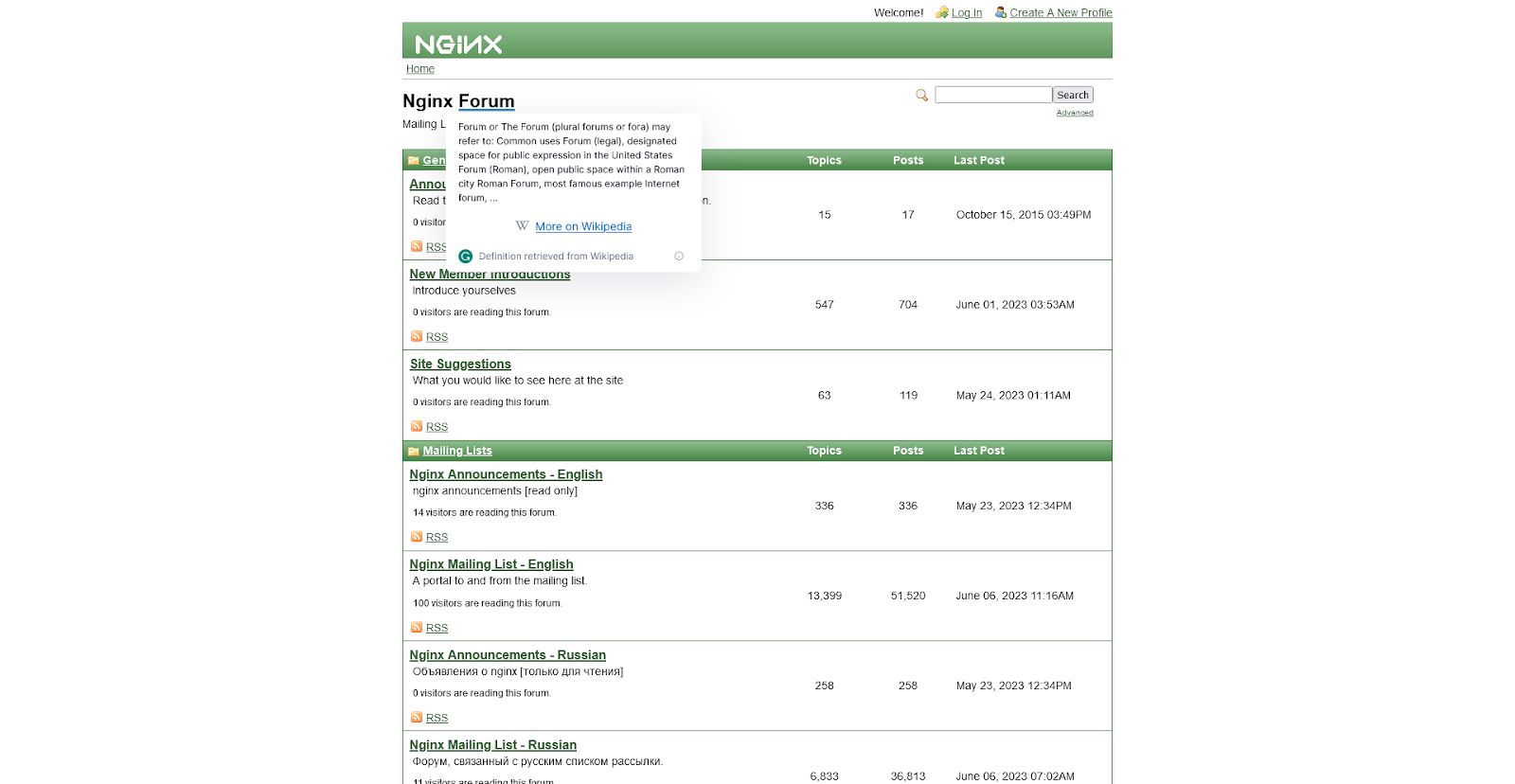
NGINX also offers plenty of learning resources on its website, including documentation, webinars, datasheets, and blog posts. You can also access dedicated support from the NGINX team via live chat. The customer support team can assist you in setting up or troubleshooting your installation.
Verdict: NGINX and Apache offer multiple support options that can help you address any concerns about your server. But unlike Apache, NGINX offers live chat from its team, which can be a useful tool for users who need direct interaction to deploy or install NGINX software.
Final thoughts: NGINX vs. Apache — the best web server for your business
When considering the ideal server software for your project, NGINX and Apache are two stellar options. Their architecture differs, using different mechanisms to achieve the same goal. Apache uses process-driven architecture, whereas NGINX uses asynchronous, event-driven architecture.
Although these two software options may seem like competitors at first glance, they work more efficiently together. NGINX brings its lightweight capabilities to the forefront, whereas Apache provides powerful support for dynamic content.
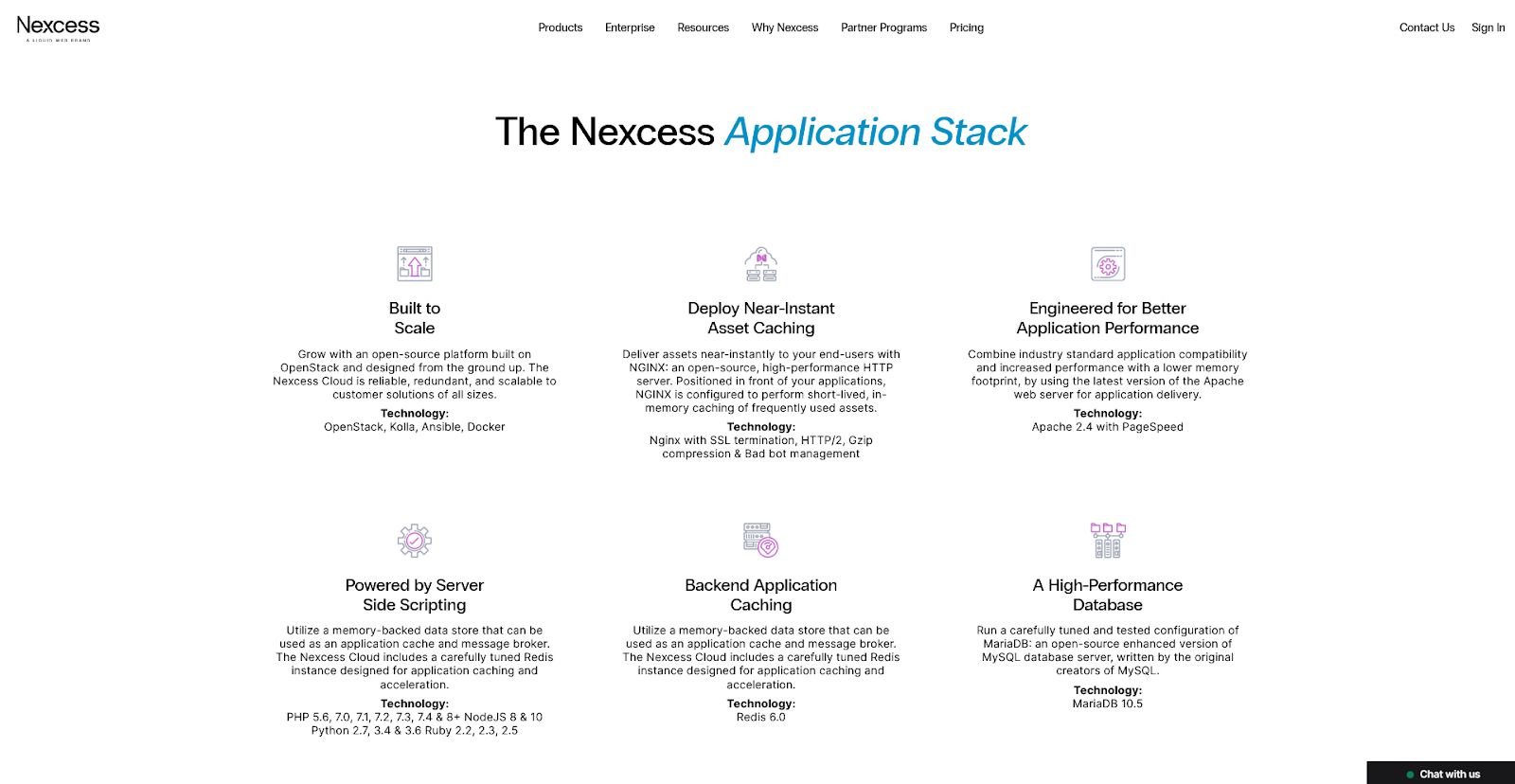
By letting NGINX do the sorting while Apache does the processing, you take advantage of the strengths of each to the benefit of your website and its users.
At Nexcess, we offer up-to-date versions of NGINX and Apache, providing you with two top-notch options for your server setup. You may configure them for your server, depending on your needs.
Check out the Nexcess Application Stack and see how opting for our flexible cloud hosting can take your business to the next level.

